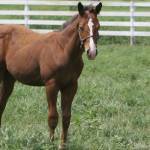Safe Horses Require Safe Fences

No matter what type of fencing borders your pastures or paddocks, safety represents a key consideration. Here are some things to think about, whether you are checking existing fence or planning to build new.
- For boundary fences, rounded corners are somewhat safer than square corners. The rounded outline minimizes the chance that a horse will get driven into a corner and bullied by another animal, and horses that are galloping in the field will be directed to turn rather than running into the fence.
- Within the pasture, fence around trees to keep horses from stripping the bark. Also fence completely around utility poles and guy wires.
- All fences should be inspected by driving or walking the lines on a regular basis. Check for any parts of the fence that are broken or loose and make repairs promptly. Watch particularly for things outside the fence (power lines, tree branches, road signs, farm machinery, and so on) that may be within reach of horses inside the pasture.
- Gates should open into the field and should be secured by a latch that fastens on the outside of the fence. Avoid having a gap between the edge of the gate and the fence post; horses can get legs and necks hung up in even a small space. Check the bottoms of gates for rusted or sharp edges.
- Double-fencing along roads is expensive, but may provide a valuable measure of safety. Horses that jump one fence are still contained for the moment, and vehicles running through the outer fence will probably be stopped before they hit the second line. Double-fencing between paddocks or fields keeps horses from interacting across a common fence and also allows vehicles and farm machinery to move easily around the property.








